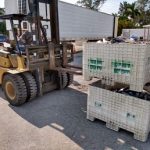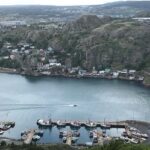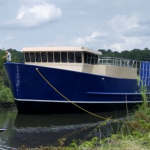Tag Archives: Canada-Nova Scotia Offshore Petroleum Board
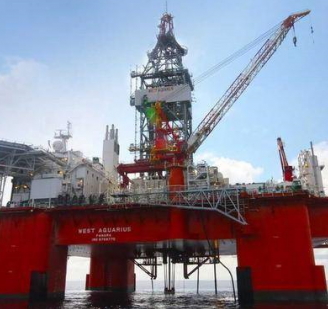
BP reports spill of drilling fluids in exploration operation off Nova Scotia
BP Canada has reported a spill of drilling fluids from its oil exploration operation taking place off the coast of Nova Scotia. An incident report on the Canada-Nova Scotia Offshore Petroleum Board website said there is a “preliminary estimate” that 136 cubic metres spilled from the West Aquarius drilling unit on Friday before it was stopped.The news release said an early investigation by the company indicates the spill occurred in piping about 30 metres below sea level. “Today marks only two months since BP started drilling, and already there has been a significant spill,”>click to read<10:52

Expert questions BP’s drilling plans for offshore Nova Scotia
An engineering expert and former oil industry consultant has raised the alarm on BP Canada Energy Group’s plans to drill off Nova Scotia. “Given BP’s current proposals for exploratory drilling offshore Nova Scotia, the likelihood of an uncontrolled blowout exceeds the upper limits for tolerability of exploratory well drilling risks,” said Robert Bea in his risk analysis of BP’s plans.,, “Based on the information provided by BP, the blowout risk is clearly not acceptable,” Bea said in an interview Monday. >click to read<
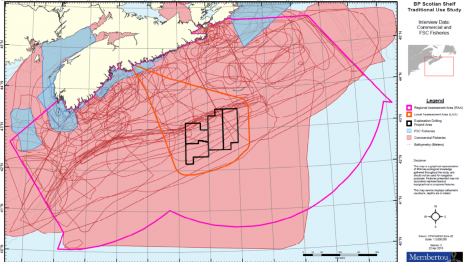
BP granted approval to start drilling off Nova Scotia’s coast
BP Canada has been given the green light to start drilling off Nova Scotia’s coast. On Saturday, the Canada-Nova Scotia Offshore Petroleum Board (CNSOPB) granted approval for the company to begin drilling one deepwater exploration well about 300 kilometres offshore. BP has applied to drill a total of four wells in the area, but Mi’kmaq communities have opposed the project saying it poses a serious risk to food, social and ceremonial fishing areas. >click to read<15:37

BP rig on Route to Offshore drill Nova Scotia: Are we the next Gulf Coast Disaster?
Nova Scotians are expressing alarm at news that BP commissioned rig West Aquarius is now en route to drill offshore, despite not having final approval from the Canada-Nova Scotia Offshore Petroleum Board (CNSOPB). “This is the height of regulatory capture,” says John Davis, Director of Clean Ocean Action Committee. “It is costing BP $260,000 a day to move this rig, why would they do that unless they are sure the Board is ready to give the green light.” “Our economic livelihood is completely wrapped up in fishing. Any danger to that is not worth the risk,” says David Levy, Deputy Warden of the Municipality of the District of Shelburne. >click to read<17:022
Shell Canada asks regulator to leave huge pipe on sea floor off Nova Scotia
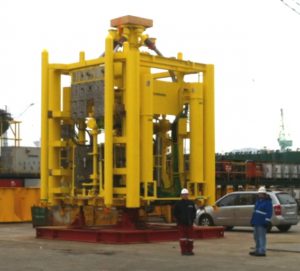 Shell Canada has officially applied to abandon two kilometres of pipe it accidentally dropped on the ocean floor off the coast of Nova Scotia. The pipe, known in the industry as a riser, broke free from a surface ship March 5 during a winter storm. “Because of the unacceptable risk associated with the health and safety exposure and potential impact to human health of offshore workers, Shell does not perceive recovery of the riser … as a viable response option,” Shell Canada’s exploration manager said Friday in a letter to Canada-Nova Scotia Offshore Petroleum Board. “Considering the health and safety exposure associated with recovery, the minimal impact to other ocean users, as well as the lack of significant adverse environmental effects, leaving the riser … in place on the seabed is Shell’s safest and most appropriate response option.” Read the story here 09:54
Shell Canada has officially applied to abandon two kilometres of pipe it accidentally dropped on the ocean floor off the coast of Nova Scotia. The pipe, known in the industry as a riser, broke free from a surface ship March 5 during a winter storm. “Because of the unacceptable risk associated with the health and safety exposure and potential impact to human health of offshore workers, Shell does not perceive recovery of the riser … as a viable response option,” Shell Canada’s exploration manager said Friday in a letter to Canada-Nova Scotia Offshore Petroleum Board. “Considering the health and safety exposure associated with recovery, the minimal impact to other ocean users, as well as the lack of significant adverse environmental effects, leaving the riser … in place on the seabed is Shell’s safest and most appropriate response option.” Read the story here 09:54
OOPS!! – Pipe breaks on Nova Scotia drilling rig, falls to ocean floor
 Two kilometres of pipe that connects an offshore drilling rig to a wellhead deep under the ocean broke off and sank in a storm off Nova Scotia’s coast Saturday, prompting concerns from an advocacy group over the risks of deepwater accidents caused by harsh ocean conditions. Shell Canada says there was no drilling fluid or hydrocarbons leak because the pipe had already been drained of fluids and a blowout protector remained in place over the well. The Scotian Shelf includes some of the province’s richest fishing grounds for haddock, and a huge spawning area for lobster. Read the rest here 09:20
Two kilometres of pipe that connects an offshore drilling rig to a wellhead deep under the ocean broke off and sank in a storm off Nova Scotia’s coast Saturday, prompting concerns from an advocacy group over the risks of deepwater accidents caused by harsh ocean conditions. Shell Canada says there was no drilling fluid or hydrocarbons leak because the pipe had already been drained of fluids and a blowout protector remained in place over the well. The Scotian Shelf includes some of the province’s richest fishing grounds for haddock, and a huge spawning area for lobster. Read the rest here 09:20
MLAs hear of capping stack limits – 10 to 30 days to successfully stop the flow of oil after a blowout
 Even if companies drilling for oil along Nova Scotia’s offshore had access to a capping stack, the CEO of the Canada-Nova Scotia Offshore Petroleum Board says it could still take anywhere from 10 to 30 days to successfully stop the flow of oil after a blowout. If safety measures like aand other systems fail, “it likely means there’s been damage down at the sea floor and … debris would have to be cleared away, so you have to send in equipment to clear the debris,” Stuart Pinks told the Standing Committee on Resources in Halifax on Thursday. Read the rest here 08:19
Even if companies drilling for oil along Nova Scotia’s offshore had access to a capping stack, the CEO of the Canada-Nova Scotia Offshore Petroleum Board says it could still take anywhere from 10 to 30 days to successfully stop the flow of oil after a blowout. If safety measures like aand other systems fail, “it likely means there’s been damage down at the sea floor and … debris would have to be cleared away, so you have to send in equipment to clear the debris,” Stuart Pinks told the Standing Committee on Resources in Halifax on Thursday. Read the rest here 08:19
Shell approval for oil drilling off Nova Scotia raises alarms in fishing industry
 The approval from the Canada-Nova Scotia Offshore Petroleum Board to allow Shell Canada to drill two oil wells on the edge of the Scotian Shelf is raising alarm bells among some in the fishing industry. “Four of those leases are directly in the major fishing banks of the Scotian Shelf,” said Davis, the former head of an anti-drilling group called the No Rigs Coalition. “Two are contiguous to the moratorium area of Georges Bank, two are to the northeast of Georges Bank and one takes in the southern part or heel of Browns Bank. The Scotian Shelf industry is under assault from the oil and gas industry.” Read the rest here 15:02
The approval from the Canada-Nova Scotia Offshore Petroleum Board to allow Shell Canada to drill two oil wells on the edge of the Scotian Shelf is raising alarm bells among some in the fishing industry. “Four of those leases are directly in the major fishing banks of the Scotian Shelf,” said Davis, the former head of an anti-drilling group called the No Rigs Coalition. “Two are contiguous to the moratorium area of Georges Bank, two are to the northeast of Georges Bank and one takes in the southern part or heel of Browns Bank. The Scotian Shelf industry is under assault from the oil and gas industry.” Read the rest here 15:02
Shell Canada gets green light to drill for oil off Nova Scotia coast – timeline to cap a blowout is still between 12 and 13 days
 The Canada-Nova Scotia Offshore Petroleum Board has authorized a Shell Canada Ltd. drilling plan in the Shelburne Basin that allows the company between 12 and 13 days to contain subsea blowouts, but one environmental group is concerned the capping stack won’t be housed here. The timeframe is shorter than the original 21-day plan, but still falls short of the U.S. requirement of 24 hours for drilling in the waters off Alaska. Shell Canada would also have to deploy a second capping stack as a contingency plan.,, Read the rest here 09:53
The Canada-Nova Scotia Offshore Petroleum Board has authorized a Shell Canada Ltd. drilling plan in the Shelburne Basin that allows the company between 12 and 13 days to contain subsea blowouts, but one environmental group is concerned the capping stack won’t be housed here. The timeframe is shorter than the original 21-day plan, but still falls short of the U.S. requirement of 24 hours for drilling in the waters off Alaska. Shell Canada would also have to deploy a second capping stack as a contingency plan.,, Read the rest here 09:53
Shell cuts capping timeline for N.S. offshore – They don’t say how much time, though.
 The controversial timeline that allowed Shell Canada Ltd. to take up to three weeks to cap a subsea blowout off the coast of Nova Scotia will be reduced. The company submitted a revised plan to the Canada-Nova Scotia Offshore Petroleum Board on Thursday that would see the time it would take to deploy a vessel and capping system reduced from the current 21-day period. “We’re still reviewing it as we speak, but it will be quite a bit less than 21 days,” said board CEO Stuart Pinks. Read the rest here 08:57
The controversial timeline that allowed Shell Canada Ltd. to take up to three weeks to cap a subsea blowout off the coast of Nova Scotia will be reduced. The company submitted a revised plan to the Canada-Nova Scotia Offshore Petroleum Board on Thursday that would see the time it would take to deploy a vessel and capping system reduced from the current 21-day period. “We’re still reviewing it as we speak, but it will be quite a bit less than 21 days,” said board CEO Stuart Pinks. Read the rest here 08:57
Canada-Nova Scotia Offshore Petroleum Board OKs seismic testing by Shell – “is not likely to result in significant adverse environmental effects,”
Shell Canada Ltd.’s plan for seismic testing in the Shelburne Basin got the green light from the , according to documents made public Friday. If mitigation measures outlined in the project’s environmental assessment are followed, the 3-D survey “is not likely to result in significant adverse environmental effects,” says a letter, dated May 1, from the board’s chief executive officer to Shell’s environment planner. continued “is not likely to result in significant adverse environmental effects,”??? Read this about the planned South East/ Mid Atlantic seismic testing. A real eye opener!
, according to documents made public Friday. If mitigation measures outlined in the project’s environmental assessment are followed, the 3-D survey “is not likely to result in significant adverse environmental effects,” says a letter, dated May 1, from the board’s chief executive officer to Shell’s environment planner. continued “is not likely to result in significant adverse environmental effects,”??? Read this about the planned South East/ Mid Atlantic seismic testing. A real eye opener!







































